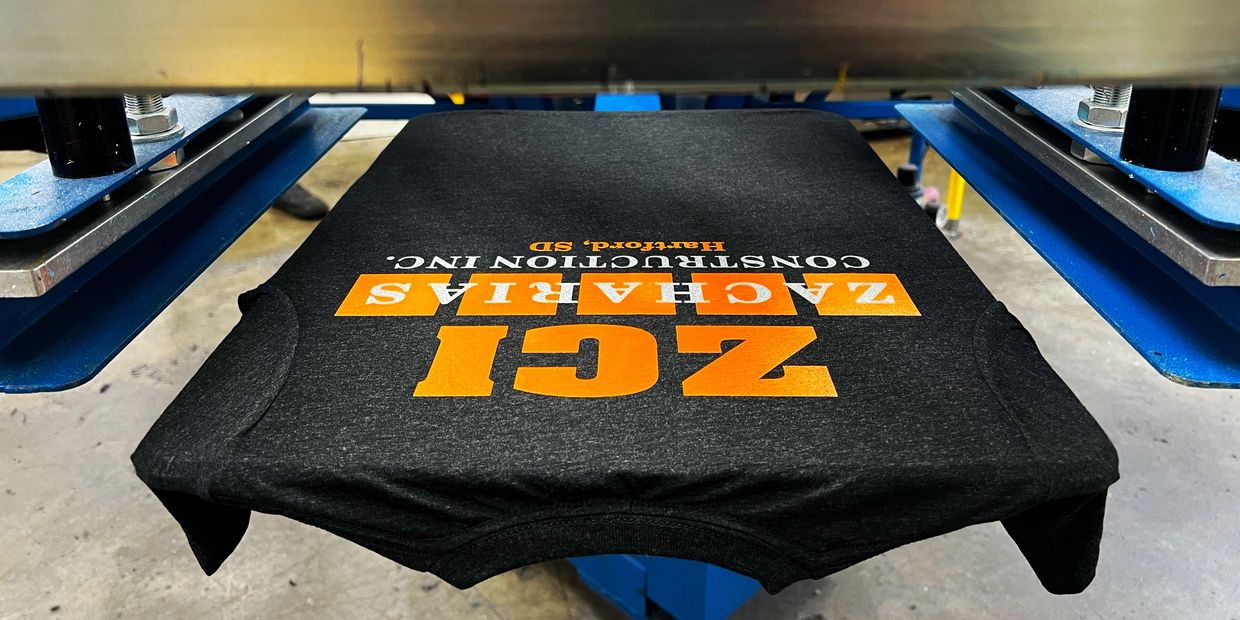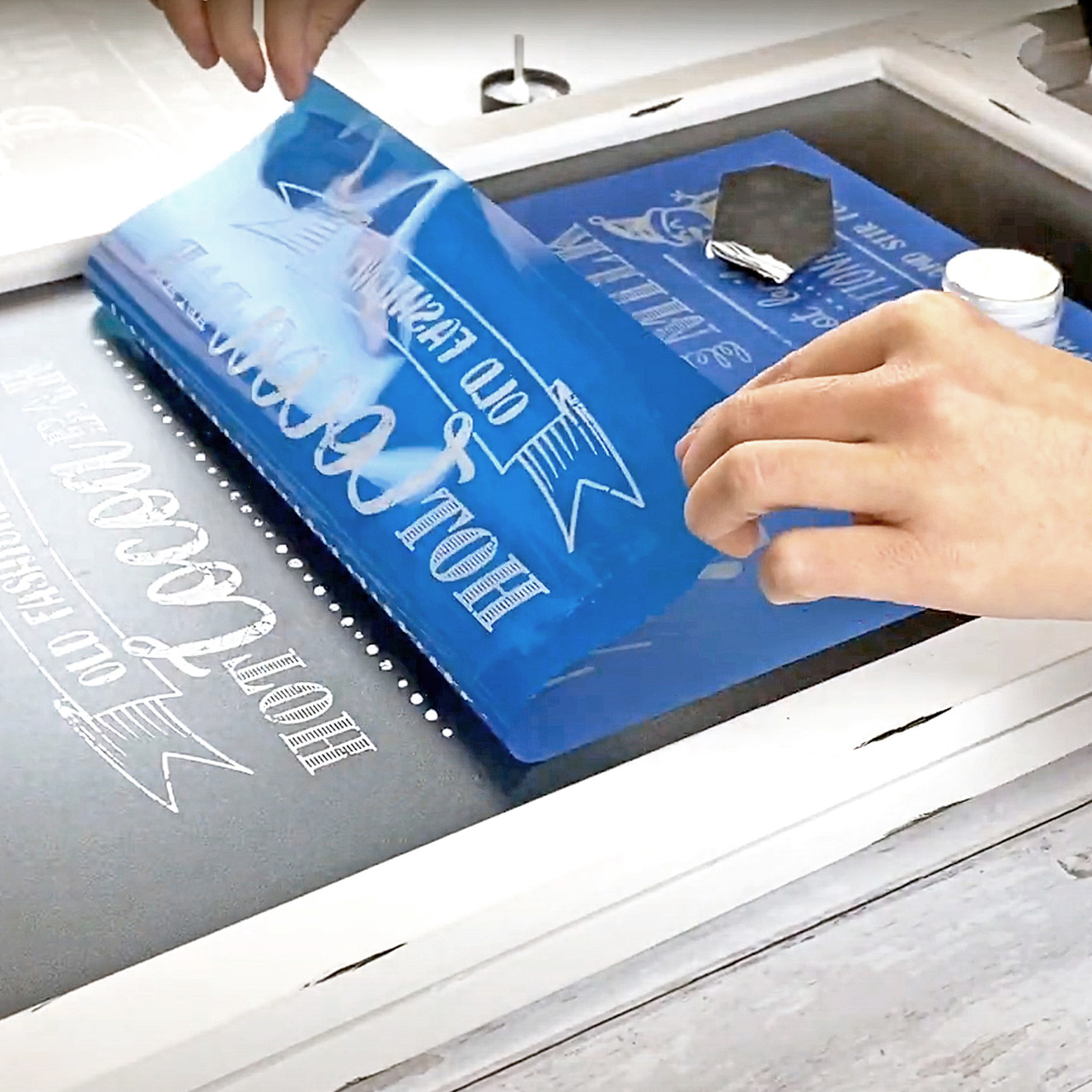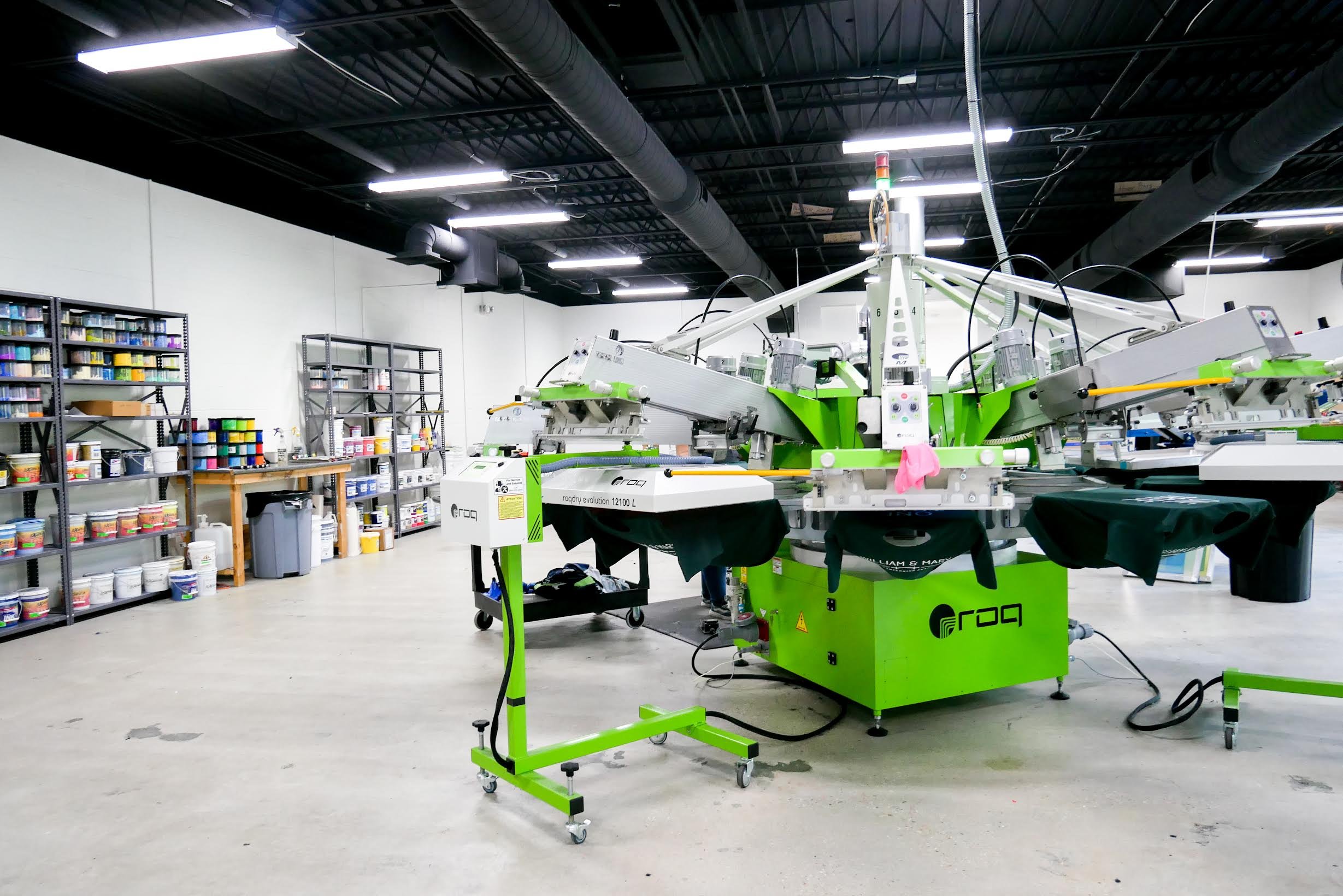High-Volume T-Shirt Printing for Schools and Organizations
High-Volume T-Shirt Printing for Schools and Organizations
Blog Article
Display Printing Uncovered: Every Little Thing You Required to Understand About T-Shirt and Garment Printing Methods
Screen printing is a fascinating method that integrates art with strategy, using endless possibilities for creativity. Prepared to discover the important components that make display publishing an art kind?
The Essentials of Screen Printing: Exactly How It Functions
When you plunge right into screen printing, you'll discover it's both an art and a science. At its core, screen printing includes producing a stencil, or screen, that allows ink to pass via just in specific locations.
Position the display over the fabric, after that make use of a squeegee to press ink via the screen onto the garment. Each step is essential, and grasping them will elevate your screen printing skills, changing simple garments into special, meaningful items.
Kinds Of Display Printing Methods
Once you comprehend the fundamentals of screen printing, it's time to explore the various methods that can elevate your designs. One prominent approach is typical display printing, where ink is pushed via a stenciled display.
If you're going for fine information, think about discharge printing. This method gets rid of color from the material, leaving a soft, classic look. Another choice is plastisol printing, understood for its toughness and vibrant shades, making it a favorite for several brands. Experiment with halftone printing to produce gradient effects and intricate designs. Each method has its unique charm, so do not hesitate to try them out to discover what fits your design best!
Crucial Equipment for Screen Printing
To accomplish sensational outcomes in display printing, having the appropriate tools is fundamental. You'll require a durable display printing frame, which holds the mesh that transfers your design onto the garment. Next off, spend in high-quality squeegees; these are necessary for applying ink uniformly across the screen.
Selecting the Right Inks and Materials
When picking inks and materials for screen printing, you need to consider the kind of ink that works ideal for your project. Believe concerning fabric compatibility to ensure your styles look great and last long. Also, check out eco-friendly ink choices to make your printing process a lot more sustainable.
Kinds of Screen Inks
Picking the right display ink is vital for accomplishing dynamic, resilient prints that fulfill your job's requirements. There are a number of kinds of screen inks to examine. Plastisol ink is popular for its adaptability and simplicity of use, providing exceptional color opacity on dark materials. Water-based ink, on the various other hand, provides a softer feeling and is green, making it ideal for those aiming to reduce their ecological influence. Discharge inks remove color from the fabric, leading to a soft, classic appearance but need specific handling. Finally, specialty inks, such as metallic or glow-in-the-dark, can include one-of-a-kind effects to your designs. Assess your job requirements and pick the ink that lines up finest with your wanted outcome.

Material Compatibility Considerations
Understanding textile compatibility is essential for attaining high-grade display prints, especially considering that various products respond distinctively to different inks. When selecting inks, think about the material kind-- cotton, polyester, or blends. For cotton, water-based inks function well, supplying gentleness and breathability. Polyester, on the various other hand, typically needs plastisol inks for much better attachment and vivid colors. If you're publishing on blends, you might need to make use of a mix of both kinds. Constantly evaluate your inks on sample material to assure they stick appropriately and preserve shade integrity. Additionally, remember that material weight and texture can affect the final outcome, so choosing the right ink and material combination is essential for your project's success.
Eco-Friendly Ink Options
Environmentally friendly inks are ending up being a preferred choice for screen printers who intend to decrease their ecological impact while keeping quality. When selecting inks, take into consideration water-based inks, which are less damaging and simpler to tidy up compared to traditional solvents. These inks bond well with fabrics, delivering vibrant results without hazardous chemicals. You may likewise discover eco-solvent inks that use fewer volatile natural substances (VOCs), making them a more secure choice for both your health and the world.
In addition, search for inks made from renewable energies, such as soy or vegetable-based alternatives. By selecting the ideal inks and materials, you'll not only produce sensational layouts but additionally contribute to an extra lasting printing procedure. Make the switch, and your prints will show your dedication to the atmosphere!
Preparing Your Style for Screen Printing

Submit Format Demands
To ensure your design looks lively and sharp on material, you'll need to pay close interest to file style needs for screen printing. Make certain your design has a clear history to avoid undesirable white sides on your prints. Maintain color settings in mind; CMYK is conventional for display printing, so transform your RGB develops accordingly.
Shade Separation Methods
Shade splitting up is an important action in preparing your layout for screen printing, and mastering it can significantly boost your print high quality. You'll require to damage your layout into individual shades, as each color calls for a separate display throughout printing. This accuracy not only ensures exact shade representation yet likewise enhances the printing procedure.
Resolution and Dimension
Attaining the very more best lead to display printing begins with ensuring your style has the right resolution and size. Preferably, your art work needs to be at the very least 300 DPI (dots per inch) for sharp, clear prints. Your final item may look amateur and pixelated. if you use lower resolution.
When it pertains to dimension, think about the measurements of your print location. Style your art work to match the final print size, preferably developing it in the actual dimensions you'll be publishing. By doing this, you'll avoid any kind of unanticipated scaling issues.
Constantly inspect your design in both vector and raster layouts. Vector graphics can be scaled without losing top quality, making them excellent for screen printing. Preparing properly will guarantee your design looks remarkable on every garment!
Step-by-Step Screen Printing Process
Screen printing is a dynamic procedure that enables you to produce vivid styles on different surface areas. To get going, you'll require a display, solution, and your picked ink. First, prepare your display by cleaning it extensively. Next, use the solution evenly and let it dry in a dark location. Once completely dry, expose your display to light with your layout positioned on it, which will certainly harden the emulsion where the light hits, developing a pattern - screen printing kit.
Pour ink onto the screen and make use of a squeegee to push the ink via the pattern onto the fabric. Raise the display carefully and allow the print dry. You've successfully screen published your layout.
Tips for Successful Display Printing Projects
While you're diving right into your screen printing tasks, remember that preparation is essential to success. Start by collecting all your materials-- inks, displays, mops, and garments. A clean work area aids avoid undesirable mistakes, so clean before you start.
Following, confirm your art work is high-resolution and appropriately sized for your garment. Evaluate your display for appropriate direct exposure and tidy it extensively to avoid spots. When mixing your inks, adhere to the manufacturer's standards to attain the ideal consistency.
Throughout printing, use even stress with your squeegee for constant results. Don't hurry; take your time to validate each print fulfills your standards. After printing, let your garments completely dry completely prior to taking care of or packaging them.
Lastly, always maintain an example of your help pop over here future recommendation. This way, you can examine your progress and improve your strategies in time. Pleased printing!

Regularly Asked Inquiries
The length of time Does It Take to Establish up a Screen Printing Work?
Setting up a display printing original site task typically takes around half an hour to an hour. You'll prepare the screens, mix inks, and change the press. The moment varies based upon intricacy and experience, so stay arranged!
Can I Publish on Various Textile Enters Using the Exact Same Method?
Yes, you can publish on different material kinds making use of the same technique, but you'll need to adjust your setups and inks. Some textiles take in ink in different ways, so trying out assurances the very best outcomes for each and every product.
What Are Typical Mistakes to Avoid in Screen Printing?
When screen printing, avoid usual mistakes like utilizing the incorrect ink, neglecting appropriate direct exposure times, or missing pre-press checks. Always evaluate your configuration and keep tidy screens to guarantee top quality outcomes each time.
Exactly How Can I Effectively Tidy and Preserve My Screen Printing Equipment?
To effectively tidy and preserve your display printing equipment, you need to regularly wash screens with proper solvents, inspect mops for wear, and assure all devices are saved dust-free and completely dry. Consistency stops pricey repairs and boosts efficiency.
Is Screen Printing Eco-friendly Compared to Other Approaches?
Display printing can be more eco friendly than other approaches, particularly if you utilize eco-conscious materials and water-based inks. By choosing sustainable supplies and techniques, you minimize waste and minimize your influence on the world.
Screen Printing Uncovered: Every Little Thing You Required to Know About Tee and Garment Printing Methods
At its core, display printing involves producing a stencil, or screen, that permits ink to pass with just in specific locations. Setting the display over the material, then utilize a squeegee to push ink through the display onto the garment. One popular approach is typical display printing, where ink is pushed with a stenciled display.When picking inks and materials for display printing, you need to take right into account the type of ink that functions best for your task.
Report this page